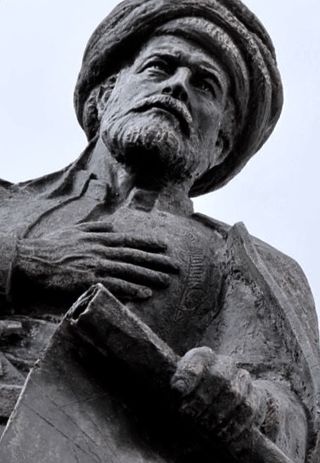
Ahmed Muhiddin Piri, better known as Piri Reis, was an Ottoman navigator, geographer and cartographer. He is primarily known today for his maps and charts collected in his Kitab-ı Bahriye, a book that contains detailed information on early navigational techniques as well as relatively accurate charts for their time, describing the important ports and cities of the Mediterranean Sea.

The Renaissance is a period in history and a cultural movement marking the transition from the Middle Ages to modernity, covering the 15th and 16th centuries and characterized by an effort to revive and surpass the ideas and achievements of classical antiquity; it was associated with great social change in most fields and disciplines, including art, architecture, politics, literature, exploration and science. It began in the Republic of Florence, then spread to the rest of Italy and later throughout Europe. The term rinascita ("rebirth") first appeared in Lives of the Artists by Giorgio Vasari, while the corresponding French word renaissance was adopted into English as the term for this period during the 1830s.

Alfred Leslie Rowse was a British historian and writer, best known for his work on Elizabethan England and books relating to Cornwall.
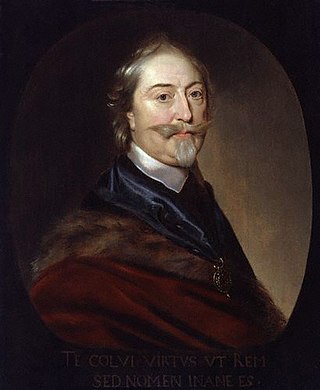
Sir Thomas Roe was an English diplomat of the Elizabethan and Jacobean periods. Roe's voyages ranged from Central America to India; as ambassador, he represented England in the Mughal Empire, the Ottoman Empire, and the Holy Roman Empire. He held a seat in the House of Commons at various times between 1614 and 1644. Roe was an accomplished scholar and a patron of learning.
The PEN Hessell-Tiltman Prize is awarded to the best work of non-fiction of historical content covering a period up to and including World War II, and published in the year of the award. The books are to be of high literary merit, but not primarily academic. The prize is organized by the English PEN. Marjorie Hessell-Tiltman was a member of PEN during the 1960s and 1970s; on her death in 1999 she bequeathed £100,000 to the PEN Literary Foundation to found a prize in her name. Each year's winner receives £2,000.

Abu Abdullah Muhammad al-Idrisi al-Qurtubi al-Hasani as-Sabti, or simply al-Idrisi, was a Muslim geographer and cartographer who served in the court of King Roger II at Palermo, Sicily. Muhammed al-Idrisi was born in Ceuta, then belonging to the Almoravid dynasty. He created the Tabula Rogeriana, one of the most advanced medieval world maps.

The Tragical History of the Life and Death of Doctor Faustus, commonly referred to simply as Doctor Faustus, is an Elizabethan tragedy by Christopher Marlowe, based on German stories about the title character Faust. It was probably written in 1592 or 1593, shortly before Marlowe's death. Two different versions of the play were published in the Jacobean era several years later.

The Levant Company was an English chartered company formed in 1592. Elizabeth I of England approved its initial charter on 11 September 1592 when the Venice Company (1583) and the Turkey Company (1581) merged, because their charters had expired, as she was eager to maintain trade and political alliances with the Ottoman Empire. Its initial charter was good for seven years and was granted to Edward Osborne, Richard Staper, Thomas Smith and William Garrard with the purpose of regulating English trade with the Ottoman Empire and the Levant. The company remained in continuous existence until being superseded in 1825. A member of the company was known as a Turkey Merchant.

Mudéjar art, or Mudéjar style, was a type of ornamentation and decoration used in the Iberian Christian kingdoms, primarily between the 13th and 16th centuries. It was applied to Romanesque, Gothic and Renaissance architectural styles as constructive, ornamental and decorative motifs derived from those that had been brought to or developed in Al-Andalus. These motifs and techniques were also present in the art and crafts, especially Hispano-Moresque lustreware that was once widely exported across Europe from southern and eastern Spain at the time.

Lisa Anne Jardine was a British historian of the early modern period.

Sir Roy Colin Strong, is an English art historian, museum curator, writer, broadcaster and landscape designer. He has served as director of both the National Portrait Gallery and the Victoria and Albert Museum in London. Strong was knighted in 1982.

Andrew Michael Graham-Dixon is a British art historian, art critic, author and broadcaster.

Joan Blaeu was a Dutch cartographer born in Alkmaar, the son of cartographer Willem Blaeu.

The Gough Map or Bodleian Map is a Late Medieval map of the island of Great Britain. Its precise dates of production and authorship are unknown. It is named after Richard Gough, who bequeathed the map to the Bodleian Library in 1809. He acquired the map from the estate of the antiquarian Thomas "Honest Tom" Martin in 1774. Numerous copies of it have been made, with an interactive online version created at Queen's University, Belfast. It measures 115 by 56 cm.
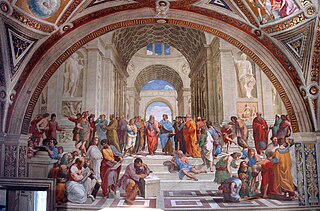
There was cultural contact between Europe and the Islamic world from the Renaissance to Early Modern period.

Pudsey Grammar School is a secondary school with a sixth form in Pudsey, West Yorkshire, England. It serves over 1300 pupils from the town and surrounding area. The school has a large Sixth Form of over 260 students offering 20 A level courses and 6 Applied General courses.
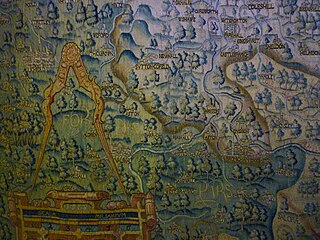
Sheldon tapestries were produced at Britain's first large tapestry works in Barcheston, Warwickshire, England, established by the Sheldon family. A group of 121 tapestries dateable to the late 16th century were produced. Much the most famous are four tapestry maps illustrating the counties of Gloucestershire, Worcestershire, Oxfordshire and Warwickshire, with most other tapestries being small furnishing items, such as cushion covers. The tapestries are included in three major collections: the Victoria and Albert Museum, London; the Metropolitan Museum of Art, New York; and the Burrell Collection, Glasgow, Scotland. Pieces were first attributed in the 1920s to looms at Barcheston, Warwickshire by a Worcestershire antiquary, John Humphreys, without clear criteria; on a different, but still uncertain basis, others were so classified a few years later. No documentary evidence was then, or is now, associated with any tapestry, so no origin for any piece is definitely established.
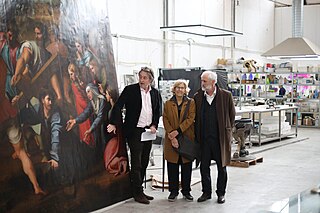
Factum Arte is an art conservation company based in Madrid, Milan, and London. Its commercial activity involves assisting contemporary artists to create technically difficult and innovative works of art. It also seeks to promote the use of non-contact 3D digitisation technologies to record museum collections and historic monuments, especially in areas where these are at risk. Since 2009, Factum Arte's non-profit cultural heritage projects have been carried out through the Factum Foundation for Digital Technology in Conservation.
Laura Ashe is a British historian of English medieval literature, history and culture. She lectures in English and is a Fellow of Worcester College, Oxford. She was educated at Leeds Girls' High School (independent).

The Pardo Venus is a painting by the Venetian artist Titian, completed in 1551 and now in the Louvre Museum. It is also known as Jupiter and Antiope, since it seems to show the story of Jupiter and Antiope from Book VI of the Metamorphoses. It is Titian's largest mythological painting, and was the first major mythological painting produced by the artist for Philip II of Spain. It was long kept in the Royal Palace of El Pardo near Madrid, hence its usual name; whether Venus is actually represented is uncertain. It later belonged to the English and French royal collections.


















